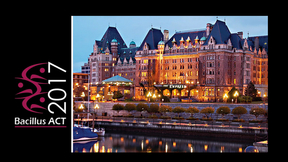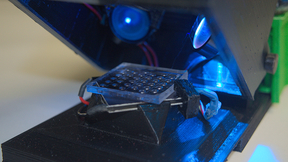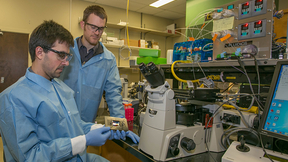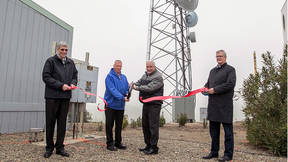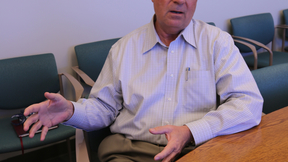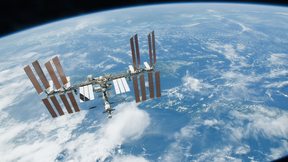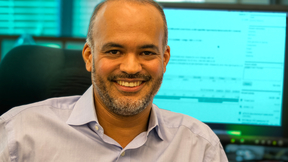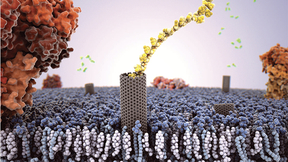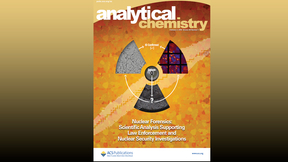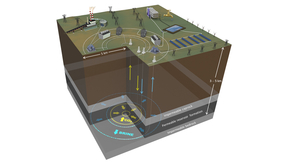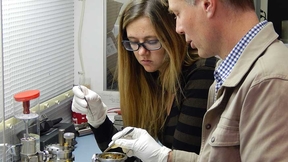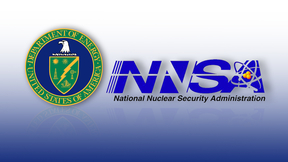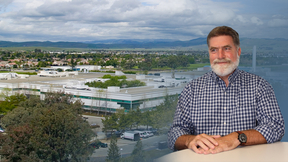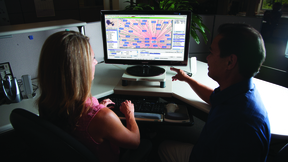Back
Global Security
International anthrax conference to explore latest scientific research findings
Scientists and researchers from all over the world who work on Bacillus anthracis, the causative agent of anthrax, and B. cereus and B. thuringiensis, two closely related bacillus species, will be heading to Victoria, British Columbia, in October for the international conference known as "Bacillus ACT." The bi-annual conference, set for Oct. 1-5, will allow members of the…
A new toolkit for rapid bacterial detection
Finding the right treatment plan for patients who have antibiotic-resistant infections is a costly and time-consuming effort. For doctors in rural areas or developing countries, there often is no source of electricity nearby or sterile lab conditions with microbiology specialists on hand. The current standard for bacterial identification is to isolate and grow the species…
Fund aids commercialization efforts
For three Lab engineers, a Lawrence Livermore National Laboratory (LLNL) commercialization fund has proven to be an oasis of assistance as they have sought to cross the legendary technology "valley of death."In technology transfer circles, there is a phase -- between when a technology is promising and when it moves forward into commercialization -- known as the "valley of…
Lawrence Livermore geophysicist receives NNSA Administrator's Gold Award
Lawrence Livermore National Laboratory geophysicist and a leader in the Global Security Principal Directorate Jay Zucca has received one of the National Nuclear Security Administration’s (NNSA) top awards for his work in nonproliferation and nuclear security.Zucca, principal deputy for Global Security, was presented with the NNSA Administrator’s Distinguished Service Gold…
'Can you hear me now?' Site 300 cell service
Employees gathered in the hills between Livermore and Tracy on Tuesday to celebrate the addition of cellular service at Site 300. The celebration took place at the foot of a tower used to mount cellular antennas, one of four antenna locations that now provide coverage to much of the developed areas of the 7,000-acre experimental site. The driver behind the investment:…
Splitting hairs to advance forensic science
With initial help from his work at a Utah university, an Australian-born biochemist is partnering with Lawrence Livermore National Laboratory (LLNL) to discover a second science-based forensic tool for identifying people in addition to DNA profiling. Now an LLNL contract employee, Glendon Parker is working with the Lab's Forensic Science Center employees to develop a…
Lab physicist receives DoD award
Lab employee Craig Wuest has received one of the top civilian awards from the U.S. Department of Defense (DoD). A citation accompanying the award - the Office of the Secretary of Defense Medal for Exceptional Public Service – highlights Wuest’s work to strengthen DoD’s nuclear survivability posture and his role as executive secretary for the Defense Science Board Task…
Lawrence Livermore, NY company collaborate on power capacity for portable sensors
A team of Lawrence Livermore National Laboratory (LLNL) scientists has begun collaborating with a New York company to improve its manufacturing process and increase the power source storage capacity of the firm’s portable sensors.Lab researchers are working with Ithaca, New York-based Widetronix under a $250,000 project financed by the Small Business Voucher (SBV) Pilot, a…
Experiment aims to advance nuclear monitoring
A Lawrence Livermore National Laboratory (LLNL) team played a key role in fielding the recent Source Physics Experiment (SPE-5) detonated at the Nevada Nuclear Security Site (NNSS).The SPE shots, including the most recent one on April 26, consist of a series of six underground high-explosive detonations in hard rock that are designed to improve the United States’ ability…
LLNL biodetection system bound for space
A biological detection system developed by Lawrence Livermore National Laboratory (LLNL) scientists that has found more than a dozen applications soon will be used in tests reaching a new frontier — outer space.The Lawrence Livermore Microbial Detection Array (LLMDA) is a versatile tool that has been employed for all kinds of studies, from analyzing the purity of infant…
National Academies tap LLNL scientist for panel
A Lab bioinformatics scientist has been selected to serve on a U.S. National Academies of Sciences, Engineering and Medicine panel that will study microbiomes in "built environments."Jonathan Allen, a researcher in Lawrence Livermore's Global Security Program, has been chosen to be part of the 15-member committee that will study microbiomes, or microbial communities of…
Shaving time to test antidotes for nerve agents
A simulation for drug-membrane permeability developed at LLNL increases the development speed for nerve-agent treatmentsImagine you wanted to know how much energy it took to bike up a mountain, but couldn’t finish the ride to the peak yourself. So, to get the total energy required, you and a team of friends strap energy meters to your bikes and ride the route in a relay,…
Need to know more about nuclear forensics? Lab's analytical chemists have it covered
Two Laboratory scientists have teamed with Australian colleagues to author an overview of nuclear forensics that is featured as the cover story for the Feb. 2 edition of Analytical Chemistry magazine.LLNL analytical chemists Mike Kristo and Ruth Kips, in collaboration with three researchers from the Australian Nuclear Science and Technology Organisation (ANSTO), wrote the…
'Underground battery' could store energy, CO2
Meeting the Paris Climate Agreement goal of limiting the increase in the global average temperature to well below two degrees Celsius compared to pre-industrial levels will require increased use of renewable energy and reducing the CO2 intensity of fossil energy use.The intermittency of when the wind blows and when the sun shines is one of the biggest challenges impeding…
Lab-Johns Hopkins team tapped to work on possible NASA effort to explore asteroid
Two LLNL scientists are part of a scientific team that has been chosen as one of five finalists for a possible NASA Discovery Program mission.The two Livermore scientists, physicist Morgan Burks and nuclear engineer Lena Heffern, a graduate student, are teamed with researchers from The Johns Hopkins University Applied Physics Laboratory (JHUAPL) on a proposal to explore a…
Event honors 20 years of Stockpile Stewardship
The proven success of the Stockpile Stewardship Program (SSP) – which pushed the limits of modern science and engineering by requiring the transition from explosive nuclear weapons testing to what is effectively virtual nuclear testing – was celebrated Wednesday at a half-day public event hosted by the Department of Energy’s National Nuclear Security Administration (NNSA)…
Harsh conditions can't contain researchers' efforts to test radiation detection systems
Researchers from five laboratories and a private company recently spent two days in blistering 100 degree heat testing radiation detection technologies amidst cargo containers.The 15 researchers demonstrated the feasibility of using gamma-ray and neutron imaging detectors to identify radioactive materials using the Laboratory’s cargo container stack testbed."The purpose of…
Nonproliferation research nets excellence medal
Anne Harrington, the National Nuclear Security Administration's (NNSA) deputy administrator for Defense Nuclear Nonproliferation, recently presented the NNSA Excellence Medal to Leon Berzins for the successful Source Physics Experiment 4 Prime (SPE4) campaign at the Nevada National Security Site (NNSS).The experiments, designed to provide a better understanding of seismo…
Roberts takes reins of Laboratory think tank
With backing from national leadership and Lab management, the new director of the Center for Global Security Research (CGSR) hopes to expand the center’s influence and impact within and beyond the gates of LLNL.Brad Roberts, who started his job as the head of CGSR in late April, joined the Laboratory for two principal reasons."First, I am committed to helping to rebuild…
Lawrence Livermore licenses tool to improve government computer network security
Government agencies, along with state and local governments, could receive a helping hand from a computer network security tool developed by Lawrence Livermore National Laboratory (LLNL) computer scientists and engineers. The LLNL software-based technology, known as the Network Mapping System (NeMS), has been licensed to Cambridge Global Advisors, a Washington, D.C.-area…


